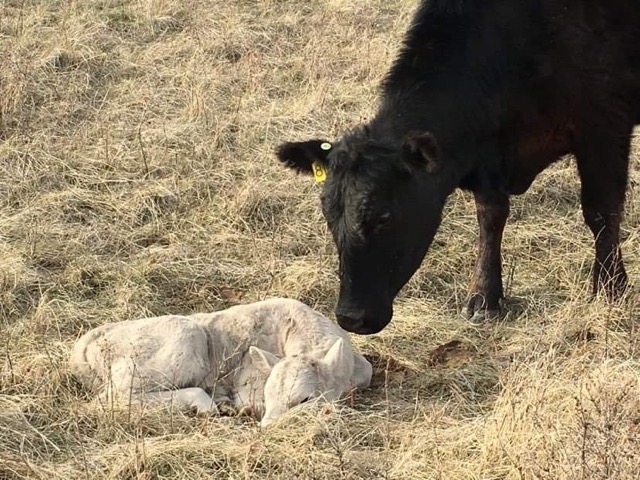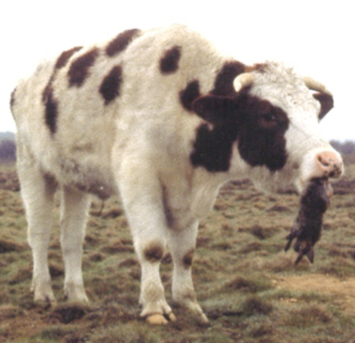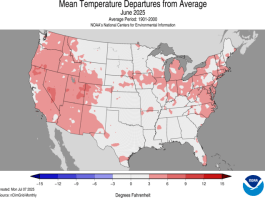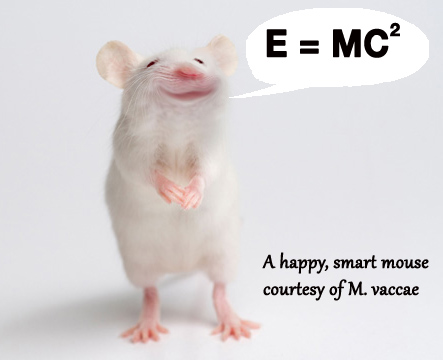

Thanks to the Beef Cattle Research Council of Canada for this great article!
Just as every farm operates with an independent set of circumstances, and every farmer is unique themselves, calving season is going to look different on every operation. There is no one right method or time of year to calve a cow herd.
There are many interconnected variables that affect – or are affected – by calving season. Length and timing of breeding season, bull power, grazing and feed resources, target weaning time, marketing windows and methods, heifer development, mortgage payment deadlines, herd size, available labor, infrastructure, and tradition are a few different factors that play an important part in calving.
Looking at survey data over the past thirty years, there has been a trend, at least in western Canada, with producers transitioning from late winter/early spring calving in February and March, to later calving in April, May or June. Whether producers are thinking about making a shift in timing, or simply reassessing their decision to calve when they do, they should think about the risks and rewards of timing their most critical phase in cow-calf operations. What are the advantages or disadvantages of keeping the same season? What are the greatest challenges during calving on my farm and how can I manage them? What are the benefits of my existing calving season, and what are the drawbacks? How much labor do I need and how much do I have to get the job done?
The following producers have done their homework and planned ahead before shifting their seasons back or ahead in order to meet the needs of their particular farms and families.
Late Summer/Fall Calving
Taralea Simpson, Portage la Prairie, MB
Taralea Simpson has been calving her Simmental/Angus commercial cow herd in August and September for many years. Growing up, her family traditionally calved during January and February. “I did that for a long time on my own and there was always something going wrong,” Simpson says, adding that scours, frozen ears, and sleep deprivation made for some challenging winter calving seasons.
In addition to raising cattle, Simpson works as an agronomist, which also played a role in her decision to opt for a later calving program. “I decided to switch to the fall, I’m not as busy with work, I have more time to make sure everyone is doing okay,” she explains. The herd is cleaner and they have fewer health issues, she says. “It’s an easier way of doing things, I wanted something that didn’t lose as many calves,” she adds.

Simpson’s farm is set up for rotational grazing and her calving pasture is right close at home. She checks calving cows daily to make sure there aren’t any problems but notes that she rarely has issues with dystocia. “The calves might be a bit smaller but you are kind of selecting for that, you want calving ease on the pasture,” she explains. She notes that calving ease on her farm has generally improved over time because over the years she has been retaining heifers from cows that are calving easily out on the pasture.
Catching newborn calves early for processing is key. “Fall calves tend to be like deer and the cows hide them,” Taralea says. “I try to do my very best to tackle them within the first day or two for castration, sneak up on them when mom’s not around,” she explains and adds that her approach works 80 per cent of the time, and she processes the remaining few when cows and calves start coming back to the yard when the snow flies. She notes that one consideration with fall calving is producers must plan ahead for more feed. “Your feed consumption is higher, those calves are 250 pounds right now and in another couple months they are 350 to 400 pounds and eating a third as much as their mother,” she says. “You do use a lot more hay through winter than those cows that are coasting through the winter and calving in spring.” She has an area set up with calf panels, and provides calves with their own bale of hay and a bit of grain that they don’t have to compete with the cows for.
The calves stay on their mothers through winter and Simpson typically weans and ships them directly to market in the first two weeks of May. “Shipping usually happens whenever I’m not busy at work or when the weather is too wet to be busy at work,” she says, and adds that timing coincides with the grass cattle market.
When it comes to breeding, Simpson says that conception rates are similar to what they were during earlier calving, however snowy weather can impact a bulls’ ability to breed. “Out on the pasture, the bulls have good traction and they can get things done before it gets snowy and slippery,” she says. In the past when winter hits sooner, the bull is slower to cover cows due to deep snow or slippery footing, which can impact the length of the subsequent calving season. She says it’s important to supplement during breeding season and make sure the herd is getting adequate minerals and protein.
Late Winter/Early Spring Calving
Randi Wenzel, Central Butte, SK
Randi Wenzel and her family operate a large, mixed commercial cattle and cropping farm in south central Saskatchewan. They used to calve from mid-March until mid-May or later, however as their farm continues to evolve, they are looking toward transitioning to an earlier, more condensed season that starts in February.
“Due to the fact that we are a mixed operation and the grain side is getting to be pretty big, I’m trying to move calving up,” says Wenzel, who also works full time as an agrologist. Her busy off-farm work season hits in April and May, the same time that they are planting crops at home. She prefers having the majority of cows calved out before they get busy in the full swing of seeding. “By taking another 20 days out of our breeding cycle, we can get everything processed, and shipped to pasture by the last week in April,” she explains.
Wenzel says preparation and proper facilities are key when calving in the winter. While the weather can be cold in February, she adds that calving in April in their area when the wind picks up and spring blizzards hit can take a toll as well. “Overall February conditions have been fairly decent,” she says, and adds they built a calving barn about three years ago to help offset the risk of unpredictable weather. They have been surprised by the occasional early arrival or set of twins but have found that calving cameras are a useful monitoring tool and have helped the family save calves. They have cameras installed in their barn as well as outside to help them keep a close eye on calving cows and newborns, but Wenzel cautions it is best to use them in combination with walking the pens. “Cameras can’t see everything so we still walk and check areas on foot as well,” she says. They have been continuously improving their calving area, removing old wood corrals and replacing them with heavy-duty portable corral panels and gates that can be moved, rearranged and adapted as their needs change.
 Moving up the breeding season a few days has not been a challenge for the cows to adjust to. “They adjusted pretty well, and if they aren’t in season they are culled,” Randi notes. Heifers are calved out at the same time as their main herd, but they would consider calving heifers a bit earlier. The bulls are turned out approximately 30 days after calves are processed and they use Charolais, Red Angus, and Simmental genetics on their herd.
Moving up the breeding season a few days has not been a challenge for the cows to adjust to. “They adjusted pretty well, and if they aren’t in season they are culled,” Randi notes. Heifers are calved out at the same time as their main herd, but they would consider calving heifers a bit earlier. The bulls are turned out approximately 30 days after calves are processed and they use Charolais, Red Angus, and Simmental genetics on their herd.
They typically wean and sell calves at the beginning of November, again timing those events around harvesting and other fall farm work like spraying. They’ve also noticed their calves are bigger now at shipping time than before. “We’ve changed up our herd sires and are being a little more aggressive on that,” Wenzel says, adding that earlier calving is likely a factor as well.
Late Spring/Early Summer Calving
Jason and Karla Hicks, Parkbeg, SK
Jason and Karla Hicks and their family operate Bluestone Stock Farms, a large Angus operation. They shifted away from winter calving to a later season, May and June, and maintain a defined breeding season of 60 days.

“Our commercial cows used to calve at the end of March and April, and we always get snow in April and don’t have anywhere to put large numbers, so we went a month later to miss those snow storms,” Jason explains. “There’s less death loss, less work,” he adds. “Calving in summer is easier on the marriage,” Karla adds, laughing. The family was awarded Saskatchewan’s TESA (The Environmental Stewardship Award) in 2015, and summer calving has become a complementary fit with their stewardship principles. “Now we calve out on grass, in rolling hills, coulees, trees. It’s set up naturally to be good calving grounds,” Jason explains. “I think what we really found was that working with Mother Nature was a bonus and calving as the grass was turning green – there are a lot of benefits,” Jason says.
They calve bred heifers as well as earlier-bred community pasture cows and some purebreds slightly earlier than the main herd, in a field closer to the yard. “This way you eliminate issues of pen calving, don’t have scours issues, and we think our heifers mother up a bit better this way,” Jason says. The weather can still be unpredictable however. “Out in the open, when the heifers are calving, in April you do get a snow storm,” Jason says. While most of their calving pastures have natural shelter, with their first-calvers, they offset the risk of cold or trampled calves by planning ahead and giving the heifers access to pre-existing corrals or facilities if the weather turns bad.
They’ve noticed since their transition they’ve had fewer calving problems. “There has been natural selection for that over time, for the entire herd,” Jason notes. They did not have any conception issues as they moved breeding and calving back. They graze their tame grass earlier in the season and save their nutritious native grass for breeding season, especially during dry years.

One downside of pasture calving has been predator attacks. Their ranch is natural terrain for coyotes and cougars, which has resulted in losses in the field and even in their corrals when they were still. “We have a huge coyote population,” says Jason. “Even 15 years ago we had coyotes take down yearlings right in the feedlot.”
After calving, they will brand, castrate, vaccinate and tag calves in four or five branding days in July. Later, they wean calves from mid to late November. “Our weaning weights didn’t change that much,” says Karla, after they backed calving off. “We didn’t change the bulls we bought or the type of cow we had. When those calves are born in nice weather, they hit the ground running and start growing,” she explains, adding that winter-born calves use a lot of energy just to keep a calf warm. As groups of calves are weaned, they are sorted and backgrounded, trying to avoid selling in the fall when the majority of calves hit the marketplace. They watch markets closely, and will sell their commercial calves anytime after weaning through to the following August after grassing them as yearlings in the summer.
Like most beef producers, Jason and Karla put thought into their plan to transition to a later calving season. They adapted and learned along the way as they worked to adjust their calving season to make the best use of their human and natural resources. “This is what we’ve figured out for us,” Jason says. “It might not work for everyone else, but we just need it to work for us.”
What do you think of these examples? Is there something here that gives you some new ideas?




Kathy, normally when there’s an article I strongly disagree with I just keep reading onto another piece. However, this article really moved me, so with much trepidation, here are my comments:
I thought the idea with business is to make money to raise our families? Two examples in the article were making decisions so they could ranch/farm around their off farm job. In my mind we should be figuring out how to ranch so we don’t require an off farm job.
None of the examples discussed higher profit as a reason for choosing a calving season. To me that should be the first consideration because if it’s not profitable why do it? If a system is not profitable, tweaking things to make it run smoother is like changing light bulbs to save on your electric bill. Yes it saves a bit of electricity, but really, does it make much difference to the financial health of your operation?
This article is like giving everyone a participation badge in soccer for fear of hurting a person’s feelings. I think the authour would have done a much greater service explaining how to calculate gross margin per cow. That way people have a tool to decide when to calve based on profit not how to work around off farm income. Just maybe, more profit would help them get rid of the job that is subsidizing the operation.
Comments are closed.